Why do terminally ill patients choose to end their lives early?
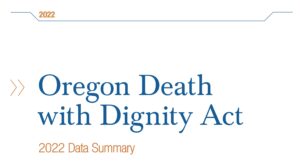 As I have done for the last 25 years, I quickly opened the most recent annual “Oregon Death with Dignity Act: 2022 Data Summary.” Yes, it has been 25 years since Oregon made “medical aid in dying” (MAID) legal. At the time, this was often referred to as “physician assisted suicide” (PAS). In Oregon, and other jurisdictions, a physician can prescribe a lethal medication for terminally ill patients who request it and who appear to be within six months of dying. There are safeguards to assure patient safety and to address other concerns.
As I have done for the last 25 years, I quickly opened the most recent annual “Oregon Death with Dignity Act: 2022 Data Summary.” Yes, it has been 25 years since Oregon made “medical aid in dying” (MAID) legal. At the time, this was often referred to as “physician assisted suicide” (PAS). In Oregon, and other jurisdictions, a physician can prescribe a lethal medication for terminally ill patients who request it and who appear to be within six months of dying. There are safeguards to assure patient safety and to address other concerns.
For 25 years this list has been part of my lectures
My interest, each year, is drawn to the list of “End-of-life concerns.” I added this list to my lectures and writings as I went about the country speaking on making end-of-life decisions. These responses are the answers to the question, “Why did the patient want MAID?”
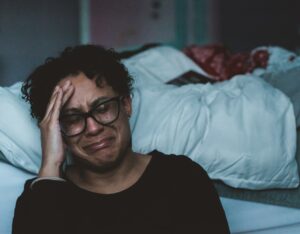
Photo by Claudia Wolff on Unsplash
Of the seven “concerns” listed, “Losing autonomy” is mentioned by 90.3% and “Less able to engage in activities making life enjoyable” is second at 90.0%. Next to last is “Inadequate pain control, or concern about it” (28%). You would think that pain would be one of the main reasons people want to end their lives sooner — to avoid pain. (See below for the whole list.)
The piece that has made it into my lectures and writings is the concern about “losing autonomy.” Understandably, people want to be in control. I am all in for controlling the things that can be controlled like physical pain. We often think about “pain and suffering” as two related issues as in, “Pain is inevitable, suffering is optional.” Suffering is the emotional and spiritual struggle that can accompany pain.
Seeking autonomy and avoiding suffering
At the risk of over simplifying, these patients are choosing an early exit to avoid suffering. Their greatest fear is losing the ability to make autonomous choices. I honestly do not know what I will do when I face my last days, so I have no judgement of these patients who hasten their deaths.
I have never lived in nor worked in a jurisdiction that allows for MAID. A few times, I ministered to a patient who was considering suicide. We asked, “What is it that makes you want to end your life?” We found that once we addressed their concern, be it pain or care of the family, the patient no longer wanted an early exit.
I write this on Good Friday, as Christians remember the sufferings of Jesus. Over the centuries Christians have found meaning in His death. Reducing pain and suffering in dying patients can be pursued while, at the same time, looking for ways to find meaning in the midst of suffering.
Here are some quotes I have gathered to share with you to make sense of suffering, and hopefully prepare both you and me for own future suffering.
- “Suffering is the state of severe distress associated with events that threaten the intactness of person.” Eric Cassell, MD. The Nature of Suffering and the Goals of Medicine
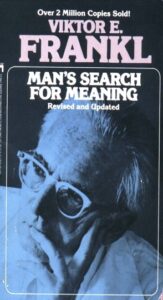 “If there is a meaning in life at all, then there must be a meaning in suffering. Suffering is an ineradicable part of life, even as fate and death. Without suffering and death human life cannot be complete.… Suffering ceases to be suffering at the moment it finds a meaning, such as the meaning of a sacrifice.” Viktor E. Frankl (1905-1997) Holocaust survivor and author of Man’s Search for Meaning
“If there is a meaning in life at all, then there must be a meaning in suffering. Suffering is an ineradicable part of life, even as fate and death. Without suffering and death human life cannot be complete.… Suffering ceases to be suffering at the moment it finds a meaning, such as the meaning of a sacrifice.” Viktor E. Frankl (1905-1997) Holocaust survivor and author of Man’s Search for Meaning- “Our avoidance instinct is also due to the fact that our culture has decided that suffering has no value.” Frank Ostaseski, Buddhist teacher and founder of the Zen Hospice Project
- “You must remember that no one lives a life free from pain and suffering.” Sophocles (497-406 BCE)
- “Whoever got this idea that we could have pleasure without pain? It’s promoted rather widely in this world, and we buy it.” Pema Chödrön, Tibetan-Buddhist teacher and author.
-
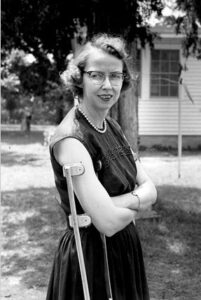
Flannery O’Connor
“I have never been anywhere but sick. In a sense, sickness is a place, more instructive than a long trip to Europe, and it’s always a place where there’s no company; where nobody can follow. Sickness before death is a very appropriate thing and I think those who don’t have it miss one of God’s mercies.” Flannery O’Connor (1925-1964) died after living 13 years with Lupus.
- “The idol of control holds out to us the hope that suffering and death can be eliminated. If we just get smart enough, we will gain control of pain and even of death. That false hope, in turn, has the effect of setting suffering up as an enemy to be avoided at all costs. We can choose never to suffer!” Elaine M. Prevallet, S.L., Benedictine Nun
- “Terry, dying doesn’t cause suffering. Resistance to dying causes suffering.” Terry Tempest Williams quoting her dying mother in the book Refuge.
_________________________
Chaplain Hank Dunn is the author of Hard Choices for Loving People: CPR, Feeding Tubes, Palliative Care, Comfort Measures and the Patient with a Serious Illness and Light in the Shadows. Together they have sold over 4 million copies. You can purchase his books at hankdunn.com or on Amazon.
_________________________
End-of-life concerns Number (%)
- Losing autonomy 2,216 (90.3)
- Less able to engage in activities making life enjoyable 2,208 (90.0)
- Loss of dignity 1,666 (71.7)
- Burden on family, friends/caregivers 1,179 (48.0)
- Losing control of bodily functions 1,077 (43.9)
- Inadequate pain control, or concern about it 686 (28.0)
- Financial implications of treatment 125 (5.1)

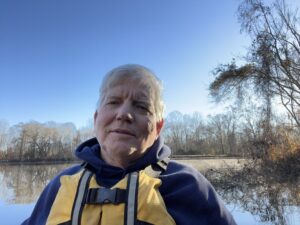

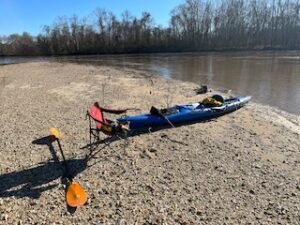

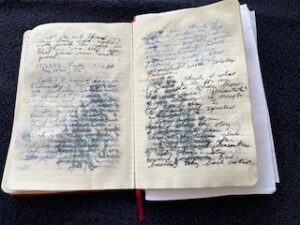
 For a situation in which you have no control: “No problem, there is nothing you can do about it.” For a situation in which you CAN do something about it: “No problem, take steps to figure it out.”
For a situation in which you have no control: “No problem, there is nothing you can do about it.” For a situation in which you CAN do something about it: “No problem, take steps to figure it out.” “There is a difference between a happy life and in living a meaningful life.… Living a meaningful life has to do with being a giver.… If you want to find meaning in your life you have to begin reaching out.… Happiness and unhappiness does not predict suicide but living a life without meaning does.”
“There is a difference between a happy life and in living a meaningful life.… Living a meaningful life has to do with being a giver.… If you want to find meaning in your life you have to begin reaching out.… Happiness and unhappiness does not predict suicide but living a life without meaning does.”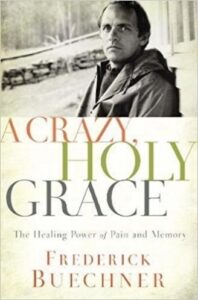 “Believing in him is not the same as believing things about him such as that he was born of a virgin and raised Lazarus from the dead. Instead, it is a matter of giving our hearts to him, of come hell or high water putting our money on him, the way a child believes in a mother or a father, the way a mother or a father believes in a child.”
“Believing in him is not the same as believing things about him such as that he was born of a virgin and raised Lazarus from the dead. Instead, it is a matter of giving our hearts to him, of come hell or high water putting our money on him, the way a child believes in a mother or a father, the way a mother or a father believes in a child.”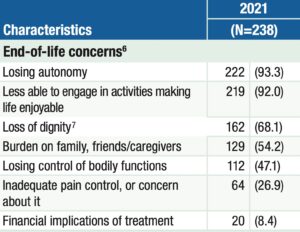
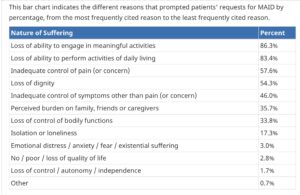
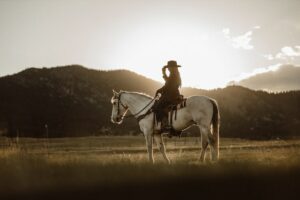
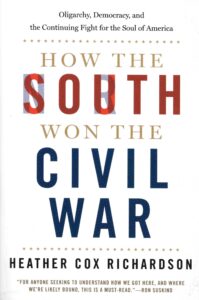
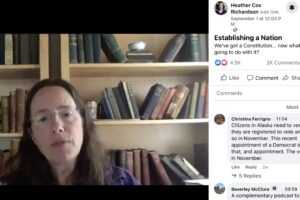
 I have just discovered two great videos with Dr. Michael Greger discussing this very topic. Each video is less than seven minutes and worth every minute of your time. One is called
I have just discovered two great videos with Dr. Michael Greger discussing this very topic. Each video is less than seven minutes and worth every minute of your time. One is called  In his second video he referred to a study reported in the Journal of the National Cancer Institute. “In fact, the most expensive drug they looked at, the one costing $169,836 a year, did not improve overall survival at all, and actually worsened quality of life. That’s $169,000 just to make you feel worse with no benefit. Why pay a penny for a treatment that doesn’t actually help?”
In his second video he referred to a study reported in the Journal of the National Cancer Institute. “In fact, the most expensive drug they looked at, the one costing $169,836 a year, did not improve overall survival at all, and actually worsened quality of life. That’s $169,000 just to make you feel worse with no benefit. Why pay a penny for a treatment that doesn’t actually help?” I was leaving on one of my daily bike rides recently and needed to pick a new book to listen to. I selected a reread —
I was leaving on one of my daily bike rides recently and needed to pick a new book to listen to. I selected a reread —  “No one ever told me that grief felt so much like fear. I am not afraid, but the sensation is like being afraid.”
“No one ever told me that grief felt so much like fear. I am not afraid, but the sensation is like being afraid.” “It is incredible how much happiness, even how much gaiety, we sometimes had together after all hope was gone.”
“It is incredible how much happiness, even how much gaiety, we sometimes had together after all hope was gone.” 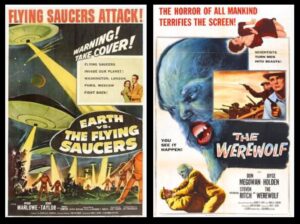 I was such a scaredy-cat at 8 years old. All I can remember of two particular movies in 1956 was that I kept my eyes closed during the entirety of each film. I have just discovered, through Wikipedia, that
I was such a scaredy-cat at 8 years old. All I can remember of two particular movies in 1956 was that I kept my eyes closed during the entirety of each film. I have just discovered, through Wikipedia, that  I just placed the latest “deep field” photo from the new James Webb Space Telescope to my home screen on my iPhone. This is a time exposure photo of a portion of the night sky the size of a grain of sand held at arms-length. Thousands of galaxies appear as we look back billions of years. Each galaxy has billions of stars — each star is not unlike our sun.
I just placed the latest “deep field” photo from the new James Webb Space Telescope to my home screen on my iPhone. This is a time exposure photo of a portion of the night sky the size of a grain of sand held at arms-length. Thousands of galaxies appear as we look back billions of years. Each galaxy has billions of stars — each star is not unlike our sun. I lived a few doors down from Scott and his family for four years. His sisters babysat my kids. I was Scott’s den leader in Cub Scouts. As disease ravaged his young body, Scott graduated from college in a wheelchair. I was so privileged to be a part of his care.
I lived a few doors down from Scott and his family for four years. His sisters babysat my kids. I was Scott’s den leader in Cub Scouts. As disease ravaged his young body, Scott graduated from college in a wheelchair. I was so privileged to be a part of his care.
 This is how David Brooks starts a recent
This is how David Brooks starts a recent 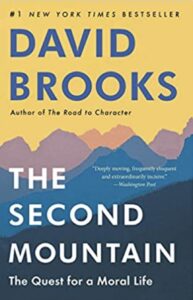 Gradually, for some people, a new core narrative emerges answering the question, “What am I to do with this unexpected life?” It’s not that the facts are different, but a person can step back and see them differently. New frameworks are imposed, which reorganize the relationship between the events of a life. Spatial metaphors are helpful here: I was in a dark wood. This train is not turning around. I’m climbing a second mountain.
Gradually, for some people, a new core narrative emerges answering the question, “What am I to do with this unexpected life?” It’s not that the facts are different, but a person can step back and see them differently. New frameworks are imposed, which reorganize the relationship between the events of a life. Spatial metaphors are helpful here: I was in a dark wood. This train is not turning around. I’m climbing a second mountain.
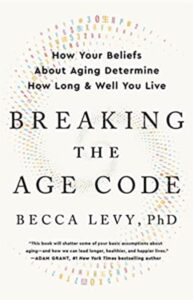 Judith Graham
Judith Graham